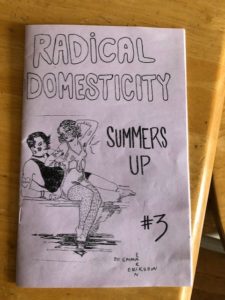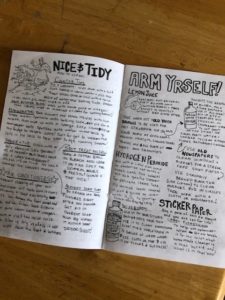The landing page of the Viral Texts projects immediately introduces any visitor of the site to the purpose of the project: “Mapping Networks of Reprinting in 19th Century Newspapers and Magazines”. The tagline or vision statement is displayed to the reader upon a remediated image of a 19th-century market-place, situating the reader immediately within the time and place of which this project is dedicated. This is further emphasized by the typeface used to capture the title of the project, which is written in a century gothic style font thus corroborating the underlying theme of the project which is based in texts of the 19th Century. On the same page, after scrolling down past a quote by Alexis de Tocqueville the purpose of project is outlined – the site provides a collection of “data, visualizations, interactive exhibits and both computational and literary publications drawn from the Viral Texts project”. (It is noteworthy to mention that each artifact indicated in this sentence is hyperlinked to enable easy navigation from the landing page. However, when I clicked the first link for “data” I was met with a 400 bad request message. All the other links worked, and took me to their respective pages in new tabs).
The site does not demand much from the visitor by way of discerning who, what and why the project exists, The project has been created for “scholars” in service of helping them to “understand what qualities” contributed to newstories, magazines, fiction and poetry texts “go viral” in 19th century magazines and newspapers. Due to the nature of “going viral” in 19th century magazines, the project sets out to answer a number of general questions about which texts ended up going viral, and how this then influenced political, cultural and social ideas among audiences of the time. From an introductory perspective the project does a good job of setting up its purpose, intended readership and how it will go about to achieve its mission. It also goes a step further in laying out what users can expect from the project by way of timeframes and additional content. The emphasis on the sponsors of the project provide an indication of who may be most interested in this – scholars of the digital humanities as well as those interested in texts, maps and networks.
The second tab following the “about” section directs readers away from the meta narrative – a description of the website and the project – into the actual content of the project itself. The first tab here describes itself as a blog and my instinct was to believe that the blog would have up-to-date, periodical updates about progress on the content development, current information from the authors, and an opportunity for the owners of the site to engage in dialogue with visitors. The headline at the top of the page “News, as well as pre- and post-print publications” validated that belief, however there were only three posts on the blog, one from 2015, one from 2016 and one from 2019. At first glance it is apparent that this is not a reliable place to receive news and updates about the project, though the most recent post does provide an overview of the coming book being produced by the team. The second post is from 2016 and blurs the boundary between blog and academic paper. The disclaimer at the top of the post informs the reader that it’s a “peer-reviewed but uncopyedited pre-print” of a forthcoming article and what follows is a periodical length post, following typical academic standards and citation style. Given the collaborative format of a website and the interactive nature of a blog there seems to be a missed opportunity here for the writers of this article to use the website as a space for open access, collaborative peer review. Given that the project is directed at a pretty niche group of scholars with similar interests this could have been a great way to invite interested parties to participate in a collaborative co-creation of text and to leverage insights from fellow experts who share a passion for the content.
The rest of the project is centred around four main artifacts: an interactive exhibit, a digital archive of poetry, visualizations and graphs. The actual structure of the website itself is rather circular, with multiple ways to access content on the site. For example, if you want to view the interactive exhibit you can access it from the hyperlink on the first page, from a hyperlink on the “Publications” page, or by accessing it directly from the drop-down menu in the navigation bar. Whilst this ensures that the content can be easily found from anywhere on the website, it also adds an element of redundancy. By being directed constantly to the same pages and materials I found myself wanting with regards to the content, and also was left questioning whether the project truly achieves the aims it set out to achieve, that is, to illuminate how and why certain texts became “viral” in the 19th century.
However, the rest of the content hosted on the website does a pretty good job in attempting to achieve that mission, or at the very least provide resources to scholars to begin to answer that question for themselves. Some of the other tabs on the site lead the view to an interactive map demonstrating how viral maps were shared, an index of network maps as well as an archive of all the scripts used to create the maps themselves. Whilst this content may seem daunting and inaccessible to the layperson, however it provides a wide breadth and depth into the topic at hand, for the audience originally highlighted – scholars who are specializing in data, maps and networks. The project provides not only the finished products for interested users, but also the nuts and bolts, scripts and layers it took to get there, thus introducing transparency and opportunity for replication.




